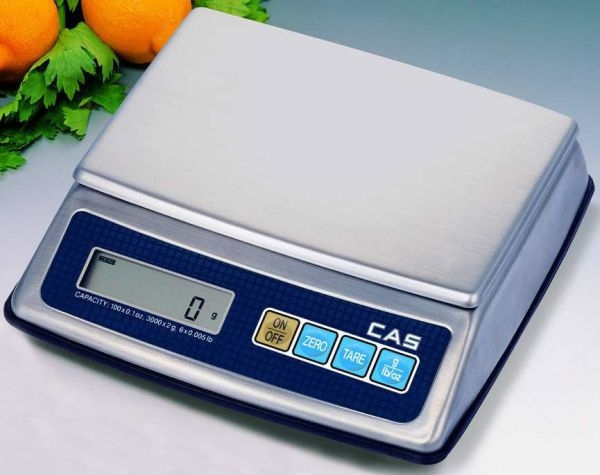Prior to 2001, were used GOST 24104-1988, according to which there are 4 accuracy class of weights: 1st, 2nd, 3rd, 4th. This would be determined by the errors of the product and the NIP.
From 1 July 2001 to operate the new GOST 24104-2001 in which accuracy class is designed according to the international recommendations of the OIML, and is class 3 precision scales: the I-th special II high and III medium.
If you compare the Standards of 1988 and 2001, the I-th specific class entered classes 1 and 2 GOST 24104-1988, in the II-nd and III high-th high – standards of weights 3 and 4 GOST 24104-1988.
The greatest limit of weighing (NPV) represents the upper limit of the weighing range. This parameter indicates the maximum weight that can be weighed on the scales at once.
Minimum capacity (NEW) defines the lower limit of the weighing range. This determines the minimum weight that you can determine the balance at one time.
The price of division of scales (d) equal to the difference of dividing the weight between the indicators on the scale of mechanical scales. On the electronic devices this value indicates the weight of the discreteness of reference weights.
Verification scale interval scales (e) – the value of the conditional, is expressed by a unit of mass used in weighing equipment classification and requirements.
The number of scale divisions of the scale (n) – value of LEL/e.
Price of verification scale determined by the maximum allowable error weights. Therefore, in the production of weighing instruments you need to strive to achieve a ratio d=e, since the lower the error on the weight equipment, the higher the accuracy of the measurement scales.
Absolute error scales according to the absolute value of the measuring range should fluctuate within the tolerance, according to GOST 24104-2001.
In fact, there are many factors that affect the accuracy of weighing equipment and consequently the measurement error. Frankly, precisely measure the weight (mass) is impossible. Such factors primarily include atmospheric effects (for example, fluctuation of temperature and humidity of the environment), human factor, etc. thus, the error of measurement of weight of electronic equipment can occur from the radiation of a mobile phone or from mechanical scales – from natural wear and tear of rubbing parts. Therefore, in the production of scales and the weight equipment you need to minimize the error of measurement of mass (weight) and extend the continuity of the mechanism.
From 1 July 2001 to operate the new GOST 24104-2001 in which accuracy class is designed according to the international recommendations of the OIML, and is class 3 precision scales: the I-th special II high and III medium.
If you compare the Standards of 1988 and 2001, the I-th specific class entered classes 1 and 2 GOST 24104-1988, in the II-nd and III high-th high – standards of weights 3 and 4 GOST 24104-1988.
The parameters of accuracy and precision scales
The greatest limit of weighing (NPV) represents the upper limit of the weighing range. This parameter indicates the maximum weight that can be weighed on the scales at once.
Minimum capacity (NEW) defines the lower limit of the weighing range. This determines the minimum weight that you can determine the balance at one time.
The price of division of scales (d) equal to the difference of dividing the weight between the indicators on the scale of mechanical scales. On the electronic devices this value indicates the weight of the discreteness of reference weights.
Verification scale interval scales (e) – the value of the conditional, is expressed by a unit of mass used in weighing equipment classification and requirements.
The number of scale divisions of the scale (n) – value of LEL/e.
Price of verification scale determined by the maximum allowable error weights. Therefore, in the production of weighing instruments you need to strive to achieve a ratio d=e, since the lower the error on the weight equipment, the higher the accuracy of the measurement scales.
Weighing intervals according to the accuracy class for weights
Absolute error scales according to the absolute value of the measuring range should fluctuate within the tolerance, according to GOST 24104-2001.
Other factors that affect the accuracy of measurement scales
In fact, there are many factors that affect the accuracy of weighing equipment and consequently the measurement error. Frankly, precisely measure the weight (mass) is impossible. Such factors primarily include atmospheric effects (for example, fluctuation of temperature and humidity of the environment), human factor, etc. thus, the error of measurement of weight of electronic equipment can occur from the radiation of a mobile phone or from mechanical scales – from natural wear and tear of rubbing parts. Therefore, in the production of scales and the weight equipment you need to minimize the error of measurement of mass (weight) and extend the continuity of the mechanism.



